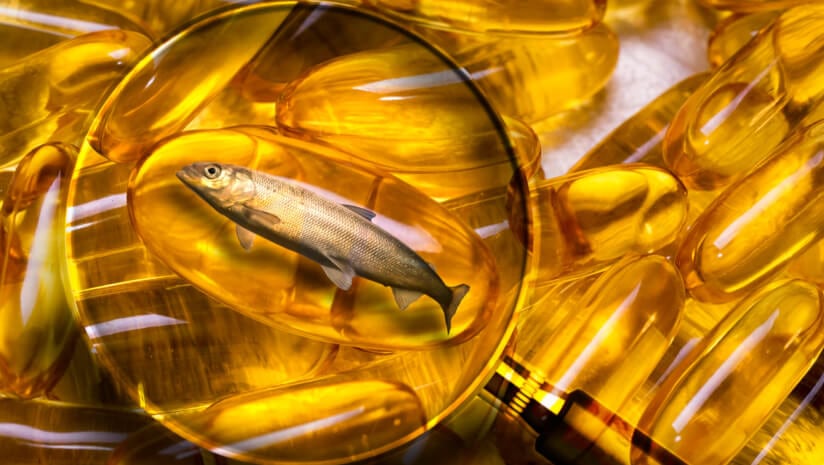“From a qualitative perspective, it retains a form, odor, taste, color and health profile similar to the fish source,” Judge Joseph A. Laroski, Jr. stated in his opinion issued on May 2. “And from a quantitative perspective, the imported merchandise consists of fatty acids derived from the source; glycerides, oligomers and triglycerides that occur naturally in the crude fish oil; and no more than 1 percent added tocopherol to prevent oxidation.”
The case dates to merchandise imported between December 2011 and May 2012, when U.S. customs initially classified ingredient supplier BASF’s Omevital 3322 EE, Omevital 400200 EE Mix Toe, Omevital 4510 EE, Omevital 3426 EE and PronovaPure 150:500 EE products under subheading 3824.90.40 or 3824.90.41. This heading carried a duty rate of 4.6% at the time.
While the parties agreed that all the imported products should be classified under the same HTSUS provision, BASF sought reliquidation under subheading 1603.00.90, and the U.S. government contended that the merchandise belonged under basket provision 2106, as “[f]ood preparations not elsewhere specified or included.”
Harmonized Tariff Schedule of the United States (HTSUS) codes
- 3824 (HTSUS 2011): Prepared binders for foundry molds or cores; chemical products and preparations of the chemical or allied industries (including those consisting of mixtures of natural products), not elsewhere specified or included
3824.90 Other
3824.90.40 Fatty substances of animal or vegetable origin and mixtures thereof - 1603 (HTSUS 2011, 2012, and 2018): Extracts and juices of meat, fish or crustaceans, molluscs or other aquatic invertebrates
1603.00.90 Other - 2106 (HTSUS 2011 and 2012): Food preparations not elsewhere specified or included
The essence of fish: Derivatization v. extraction
The key determinant in the case was defining what qualifies as “extract” and whether it maintains the essence of the fish source.
BASF sources its crude fish oil in bulk from ungutted whole fish (typically anchovies, sardines and mackerel) for processing at omega-3 production sites in Sandefjord, Norway, and Callanish, Scotland, where the oil is physically separated from the fish solids.
Through a process known as transesterification, BASF chemically cleaves the fatty acids, including the EPA and DHA, from the triglyceride’s glycerol backbone, esterifies the fatty acids with ethanol to form semi-synthetic fatty acid ethyl esters and concentrates the ethyl esters to create a light-yellow oil with high concentrations of EPA and DHA ethyl esters. A small amount of tocopherol is added to prevent oxidation.
As definition of “extract”, BASF submitted: “To remove from or separate; to obtain by some chemical and/or physical process; 2. To obtain from a substance by chemical or mechanical action” (Oxford Dict. of Biochem. and Mol. Bio. 233 2d. ed. 2006). Meanwhile, the U.S. government took the stance that BASF merchandise “is synthesized through transesterification, which is a derivatization process, not an extraction process.”
In its opinion, the Court stated that the Government mistakenly frames the issue as a choice between “derivatization,” on the one hand, and extraction, on the other.
“But this ignores the above scientific definitions which facially appear to describe a process like transesterification,” Judge Laroski, Jr wrote. He highlighted that “the same fatty acids that were present in the triglyceride molecules prior to transesterification remain after transesterification, and extraction is commonly understood to involve chemical reactions.”
‘No quality difference between the forms’
The classification of transesterified fish oils has also arisen in the context of a series of class action lawsuits. Cases primarily focused on allegations of misbranding and deceptive marketing practices, claiming that omega-3 fatty acid ethyl esters are not equivalent to natural fish oil.
Because transesterification submits natural fish oil to a process that alters its molecular composition, transforming omega-3 fatty acids into ethyl esters, plaintiff’s attorneys have argued that the resulting product is chemically distinct and potentially misleading consumers. Most these cases have since been dismissed.
Commenting on a 2023 class action lawsuit alleging that Walmart’s Spring Valley 1000 mg Fish Oil supplement was falsely labeled fish waste processed using industrial solvents and ethanol, the Global Organization for EPA and DHA Omerga-3 (GOED) said that there is no quality difference between the forms and that all are absorbed by the body to confer health benefits.
“By esterifying the triglyceride oil, companies can offer higher amounts of EPA and DHA in a smaller dosage form, which meets current consumer demand for higher levels of omega-3s per pill,” Harry Rice, PhD, vice president of regulatory and scientific affairs at GOED, told NutraIngredients-USA at the time. “The esterification process doesn’t have any impact on the quality of the EPA and DHA contained in the final product.”
Judge Laroski, Jr. echoed Dr. Rice’s comments on the composition of the transesterified forms, noting that the parties to the suit agreed that the fatty acids, EPA and DHA, of the ethyl ester molecules found in the imported merchandise are the same that were present in the triglyceride molecules found in the fish source prior to the formation of the ethyl ester molecules through transesterification.
“In other words, a consumer seeking health benefits from omega-3 fatty acids can get those benefits by consuming either the fish source or the imported merchandise,” he wrote. “That the health benefits of fish oil survive the production process here demonstrates another important throughline from the fish source to the imported merchandise.”
Nutraingredients reached out to BASF for comment but did not hear back prior to publication.


